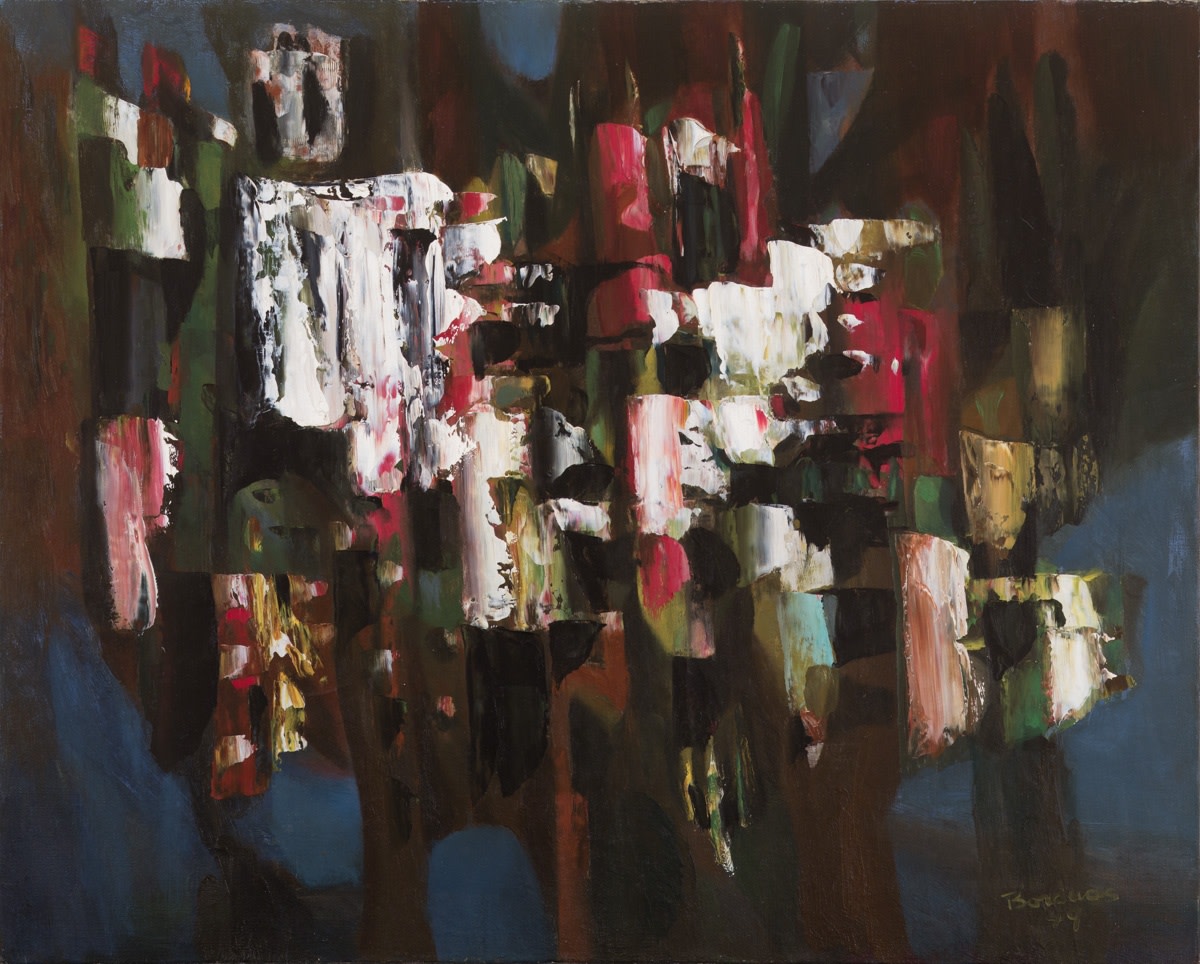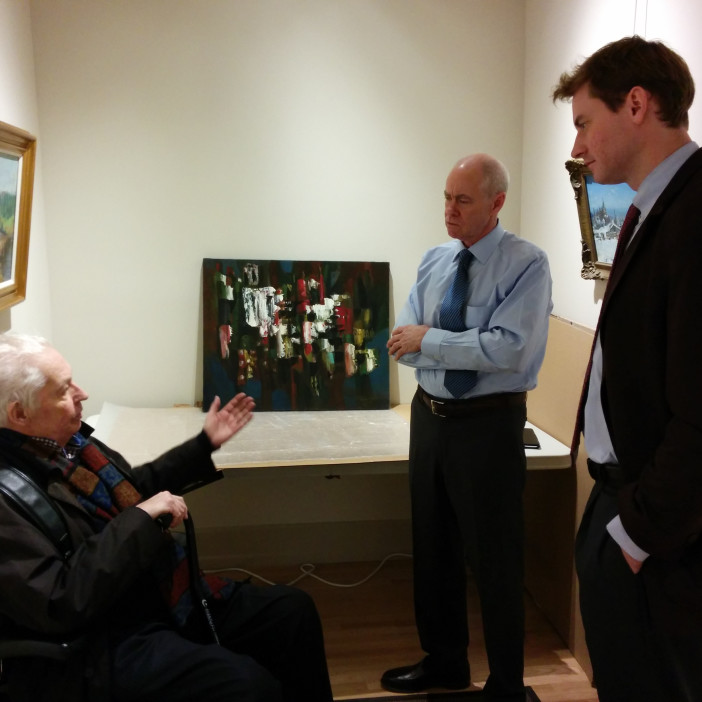Magnificent and Especially Rare 1949 Borduas Sold by Klinkhoff

Paul-Émile Borduas (1905-1960), Le tombeau de la cathedrale defunte, early 1949, oil on canvas, 25 ½ x 31 ¾ in. signed and dated lower right: “Borduas/49”. Catalogue raisonné number: 2005-0840.
This magnificent Borduas painting is a fine discovery. Paintings of 1949 are especially rare to come upon. A year after the publication of the manifesto Refus Global, and his suspension from his teaching position at the École du Meuble, 1949 was not an easy year for Borduas. He literally had to live from his painting. For this purpose Le tombeau de la cathédrale défunte was first exhibited in Surrational Painting among nineteen other recent works in an exhibition at the studio of brothers Guy and Jacques Viau (May 14-26). This gives us a more precise idea of the date of the painting: somewhere between January and May 1949, before Borduas fell ill with stomach ulcers and had to be operated on.
Up until 1948 Borduas was in the habit of giving us the order in which his paintings were done by adding a number like 1.48, 2.48, 3.48…to the literary title. In 1949, he abandoned that practice.
At the end of the year he had another opportunity to exhibit Le tombeau de la cathédrale défunte, this time in Quebec City in a group show organized by the painter Irène Legendre who would teach in the sixties at the École des beaux-arts in Montreal. Legendre proposed Stanley Cosgrove, Goodridge Roberts and Borduas to exhibit alongside her at the Musée du Québec, 23 November – 18 December. At this show, due to the publication of a bilingual catalogue, the eighteen works Borduas exhibited are recorded. Le tombeau de la cathédrale défunte bore the number 17, which is still visible on the back of the stretcher.
A few sales were made during this exhibition and so Borduas avoided for a few more months “the black misery to come,” as he would refer to an ensuing period in Projections libérantes, a pamphlet written and published about this time. Le tombeau de la cathédrale défunte reflects the general mood of Borduas' paintings after his firing from the École du Meuble.
As an anonymous letter to the newspaper, Le Canada, 20 May 1949, p. 4, noted: “Borduas goes back into the night, but under unsuspected layers of emotional consciousness, to unearth glimmers and bursts of whole realms that no one before him has approached.” This comment applies perfectly well to our painting. In the imagination of Borduas, the verticality of the strokes of the painting knife on a dark blue background, could indeed depict the architecture of a cathedral sinking in the dark. For the man who wrote in the Refus global, “The hell with the holy water, sprinkler and the tuque!” Borduas' title imagining the “tomb of a defunct cathedral” is not surprising. The title was surely given after the painting was done but it corresponds to a reading of the picture by Borduas and as such has its interest. The title seems reminiscent of the famous Pavane pour une infante défunte, by Ravel and it is not the only allusion to music during that period.
Another recently discovered painting of 1949 is titled Allegro furioso. Maybe Borduas, like many abstractionists, wanted to suggest that non-figurative painting could emulate music in the creation of moods or feelings. At any rate the beautiful Tombeau de la cathédrale défunte adds a major piece to the work of one of our great artists, Borduas.
We thank Dr. François-Marc Gagnon for contributing this appreciation.
© The content on this page is protected by Copyright.




